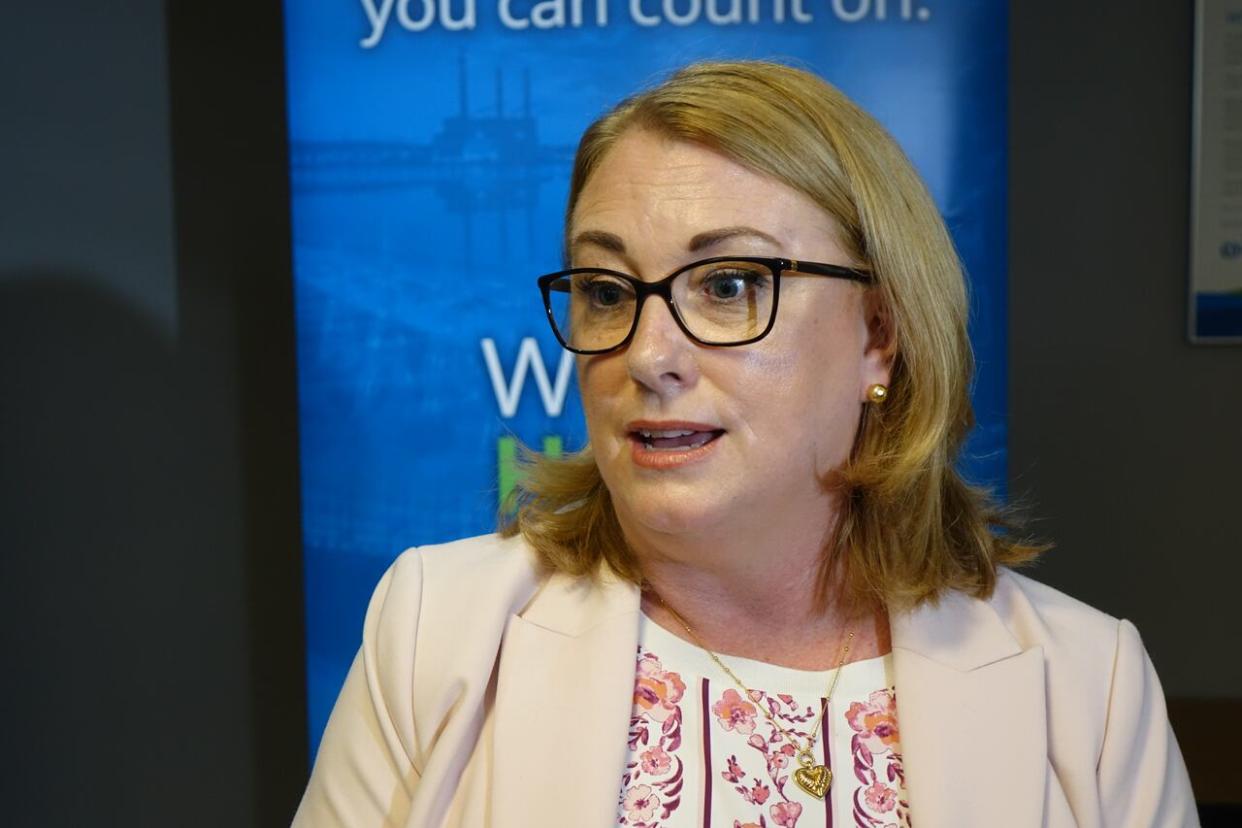With 672-page report, Hydro adds a few details to plan to meet energy demands


Newfoundland and Labrador Hydro CEO Jennifer Williams says the Crown corporation is working on how best to retire the Holyrood thermal generating station. (Patrick Butler/ CBC News)
Newfoundland and Labrador Hydro has a plan to meet the province's energy demands for the next decade in its latest report to the Public Utilities Board. And it took almost 700 pages to lay it all out.
N.L. Hydro's Reliability and Resource Adequacy review mostly details what the Crown corporation has already said: new projects are needed to keep up with increasing power demand.
Driven by population growth and electrification, the Crown corporation expects Newfoundland's energy needs to increase by 230 megawatts by 2034 — a 16 per cent increase over current levels.
To meet the expected increase, Hydro is adding new solutions for capacity and energy through three projects.
CEO Jennifer Williams said the Crown Corporation will add an eighth unit at the Bay d'Espoir hydroelectric dam on Newfoundland's south coast and a new 150-megawatt combustion turbine in Holyrood to boost the energy grid.
The combustion turbine will initially burn diesel, Williams said, but the intention is to switch to renewable fuels such as biofuels.
"If we were to procure combustion turbines, we would require that they either currently have the ability to put through renewable fuels or some kind of biofuel or can have that conversion available into the future," Williams told reporters Thursday.
The two projects have a price tag totalling more than $1 billion.
Hydro's third project is in wind energy. The Crown corporation plans to purchase 80 megawatts of wind from a private company, with no current price estimate.
In combination with Muskrat Falls, the three projects will replace the Holyrood thermal generating station, which Williams says is at the end of its life.
"Between now and 2030 is when we hope to have some decisions made and some other projects under construction to allow for Holyrood's retirement," she said.
With increased demand and new projects comes increased costs, but Hydro said customers don't need to be concerned about their power bills skyrocketing — yet.
In May, the province finalized its rate mitigation plan to subsidize power rates until 2030, which will cost Hydro $2 billion.
The proposed plan is to cap the residential, domestic rate increases on the island of Newfoundland at 2.25 per cent annually.
It will cover Muskrat Falls and Newfoundland and Labrador Hydro costs, which buys the company time to figure out a plan.
"We do have time to understand how we deal with whatever costs might arise from this," Williams said.
Download our free CBC News app to sign up for push alerts for CBC Newfoundland and Labrador. Click here to visit our landing page.

 Yahoo News
Yahoo News 
